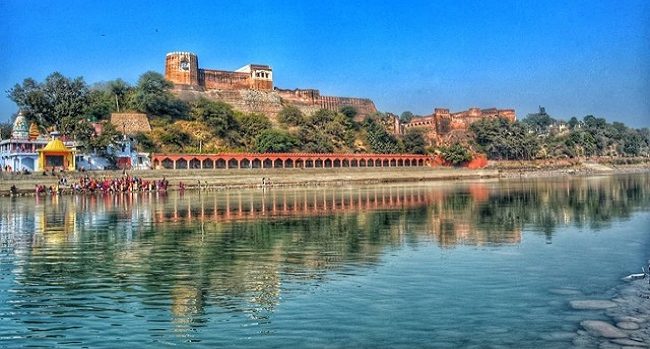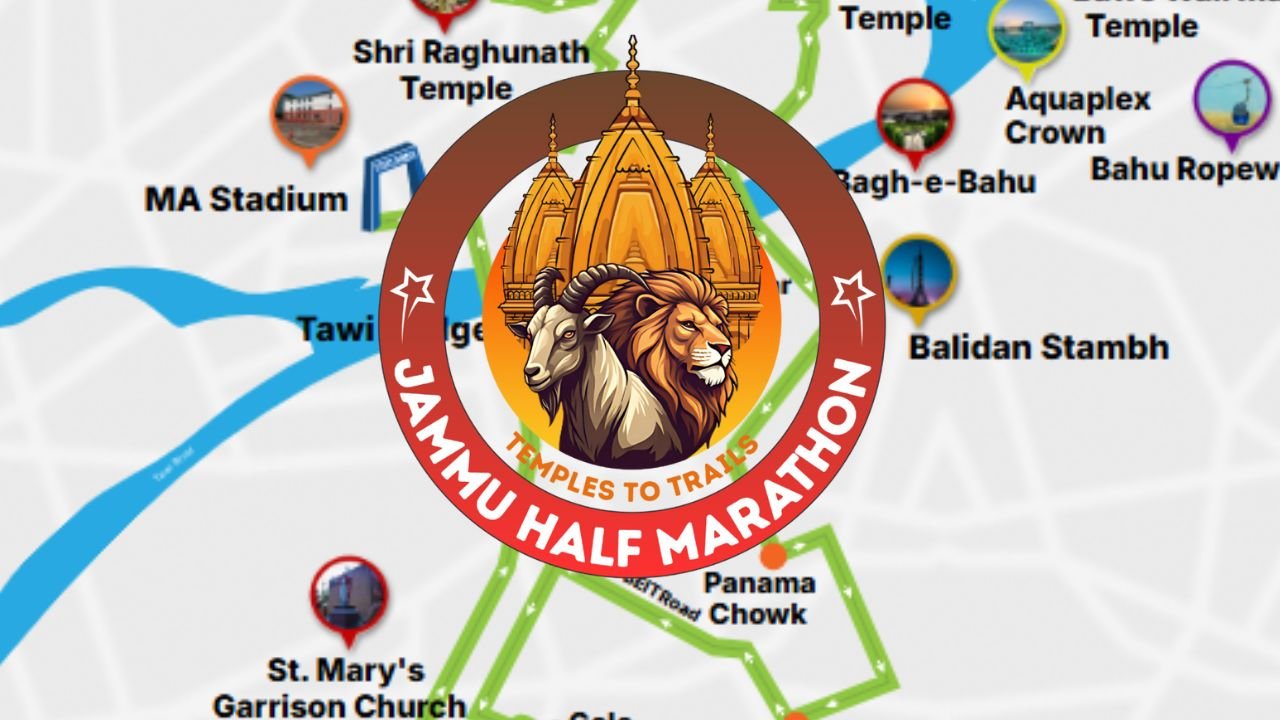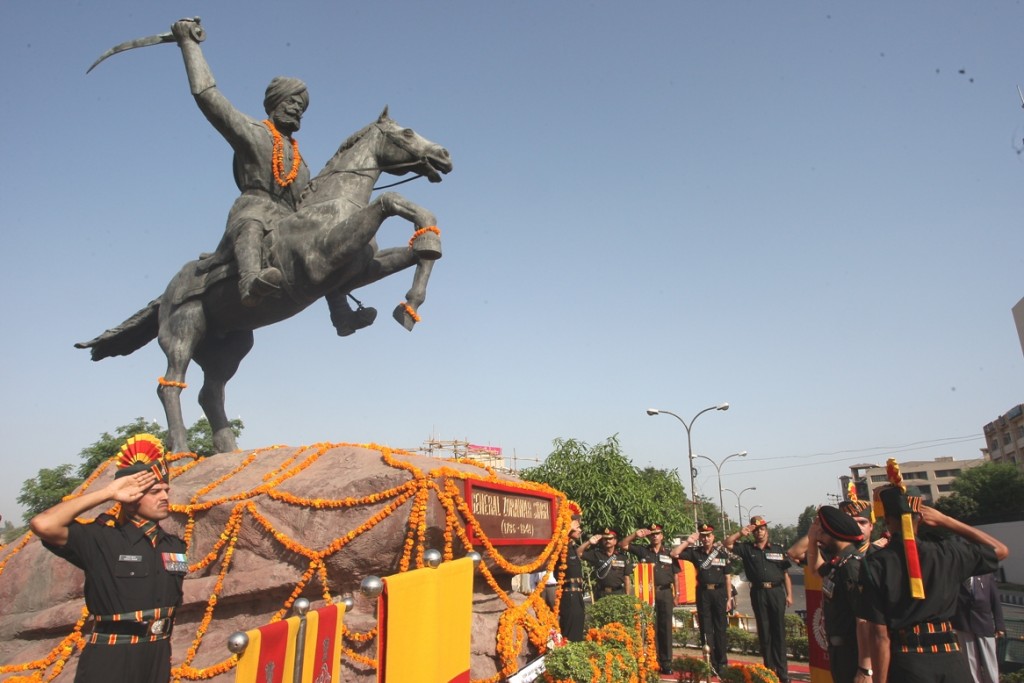Akhnoor Fort, located on the eastern side of Akhnoor town along the serene banks of the Chenab River, is a historic marvel of immense archaeological significance. This grand structure not only offers a glimpse into Jammu and Kashmir’s rich past but also serves as a crucial site for understanding ancient civilizations. Built in 1802 by Raja Alam Singh, the construction of this fort originally began in 1762 under the orders of Raja Tegh Singh. Today, the Archaeological Survey of India (ASI) has declared Akhnoor Fort a protected national monument under the Monument Act of 1958, ensuring its preservation.
Architectural Brilliance of Akhnoor Fort
The fort stands as a two-story structure perched on a cliff, providing a mesmerizing view of the Chenab River. Each corner of the fort features two-story watchtowers, enhancing its defensive capabilities. Additionally, the fort includes a unique riverfront entrance, making it a remarkable blend of strategic military planning and architectural excellence.
One of the most intriguing aspects of Akhnoor Fort is its ongoing excavation, which has uncovered evidence from three distinct historical periods. These layers of history include:
- Harappan Era (Indus Valley Civilization): Excavations have revealed red and grey earthenware, including jars, beakers, and goblets, indicative of the advanced craftsmanship of the Harappan civilization.
- Early Historic Period: This phase is marked by the discovery of early historic pottery, shedding light on the lifestyle and traditions of ancient settlers.
- Kushana Period: Significant finds include Kushana artifacts and a well-structured rubble diaper masonry wall, flanked by a 3-meter-wide street, showcasing the urban planning skills of the era.
Read also: Your Complete Guide to Beating Retreat Ceremony at Suchetgarh, Jammu
Jia Pota Ghat: The Symbol of Royalty and Heritage
Akhnoor is not only famous for its majestic fort but also for the Jia Pota Ghat, located on the right bank of the Chenab River. This historic site holds a special place in the hearts of the Dogra people as it played a crucial role in the formation of modern Jammu and Kashmir. Jia Pota Ghat is named after the Jia Pota tree (Putranjiva roxburghii), under whose shade Maharaja Gulab Singh was coronated as the Raja of Jammu by the great Maharaja Ranjeet Singh on June 17, 1822. This Raj Tilak ceremony marked the beginning of the Dogra rule and the foundation of the princely state of Jammu and Kashmir.
Legacy of Jia Pota Ghat
Jia Pota Ghat stands as a silent witness to the march of civilization. Historians believe that Akhnoor represents the northernmost point of the Indus Valley Civilization, suggesting that ancient Harappans might have navigated the Chenab River and utilized Jia Pota Ghat as an entryway to their settlement at Manda, a site now located within the Akhnoor Fort premises.
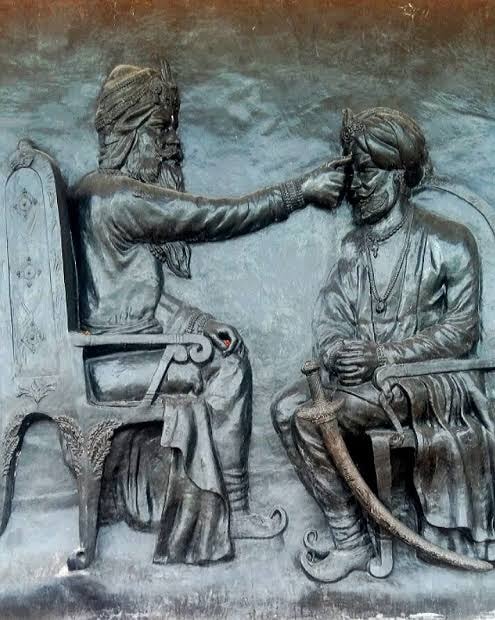
To commemorate Maharaja Gulab Singh’s coronation, a memorial tablet depicting the Raj Tilak scene has been installed at Jia Pota Ghat. Although the original Jia Pota tree was lost in the devastating floods of 1957, a few healthy specimens continue to flourish in Jiya Pota Park, a beautifully maintained area developed in 1999.
Akhnoor: A Gateway to Ancient Civilizations
The historical significance of Akhnoor extends beyond its fort and ghat. The region is known for its Neolithic sites, making it an important location for understanding early human civilization in India. The town is also home to several other ghats, such as Pehra, Gurgi Pattan, and Harmandar Ghat, each with its own historical relevance.
Read also: All About Nabha Mata Shaktipeeth in Jammu
Why Visit Akhnoor Fort?
- Rich History: Explore the remnants of the Indus Valley Civilization, Kushana Empire, and Dogra Dynasty.
- Architectural Grandeur: Admire the well-preserved two-story structure with watchtowers and strategic riverfront access.
- Scenic Beauty: Enjoy breathtaking views of the Chenab River.
- Cultural Significance: Witness the historical Jia Pota Ghat, the site of Maharaja Gulab Singh’s coronation.
- Excavation Site: Discover ongoing archaeological work that unveils new aspects of ancient history.
Location of Akhnoor Fort
Akhnoor Fort is located in the historical town of Akhnoor, 28 km away from Jammu city.
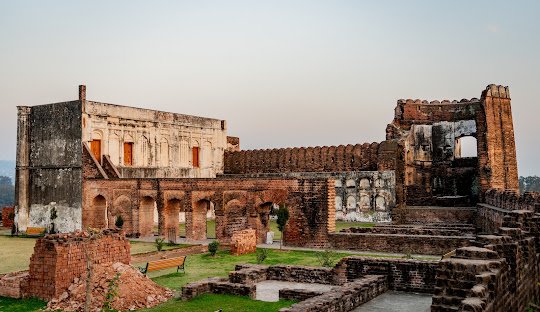
Akhnoor Fort is more than just a historic monument; it is a treasure trove of cultural and archaeological wonders. Its connection to the Harappan civilization, Kushana Empire, and Dogra Dynasty makes it a must-visit destination for history enthusiasts. Jia Pota Ghat, with its profound historical significance, further elevates Akhnoor’s status as a heritage landmark. Whether you are a history buff, an architecture lover, or a nature enthusiast, Akhnoor Fort offers an unforgettable journey into India’s rich past.
Plan your visit to Akhnoor Fort and Jia Pota Ghat to witness history, culture, and scenic beauty all in one place!

